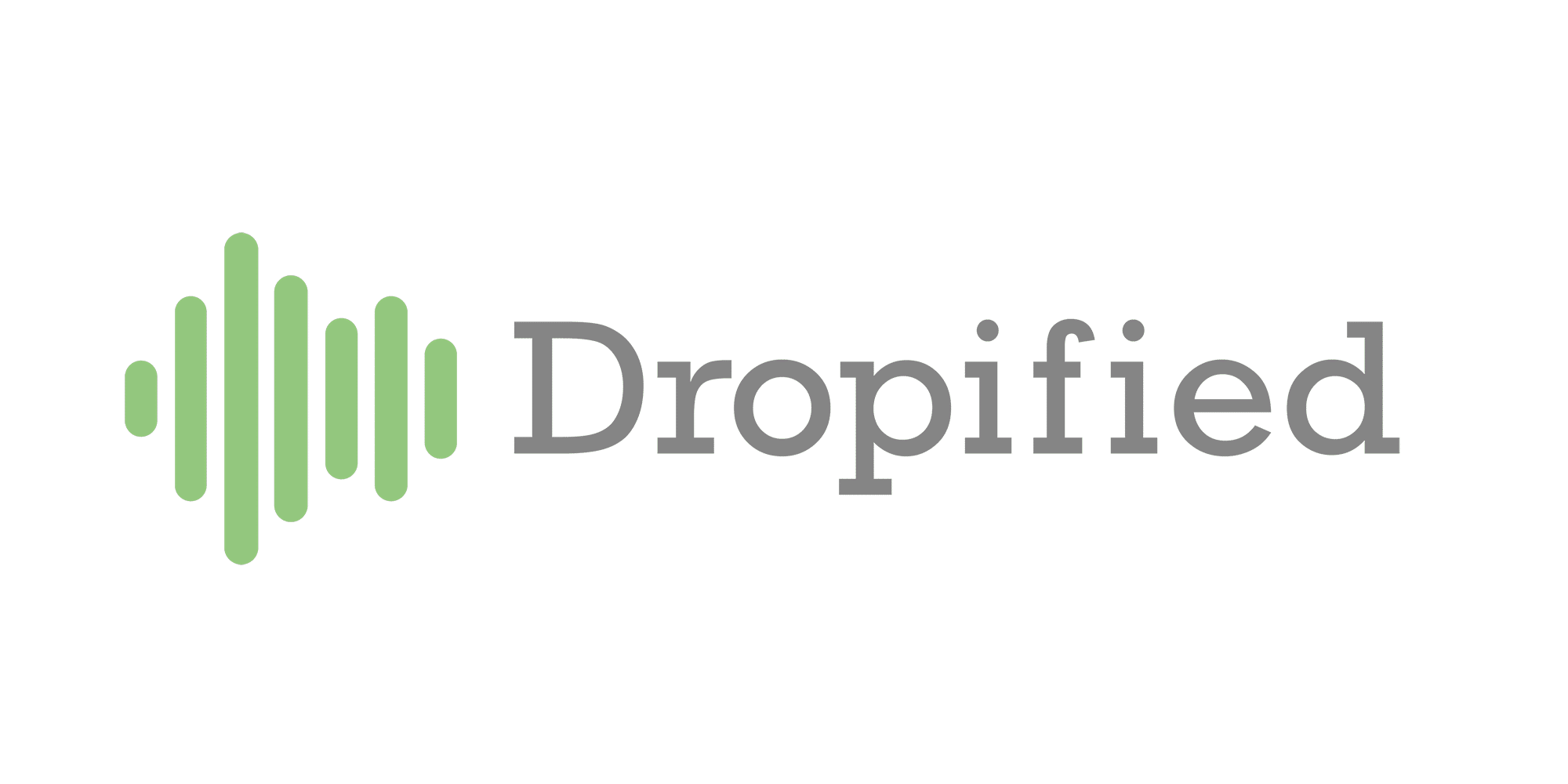Or go to our Shopify Theme Detector directly
10 Ways To Improve Your Product Descriptions
Last modified: April 25, 2024

Product descriptions are vital if you want to convert customers to your website. The best product descriptions will convince skeptical buyers that your product is worth buying. The trouble is that too many product descriptions are poorly written. So badly, that they do little to convince anyone but those who are already dedicated to buying.
Therefore, you need to make a change. Throw out the old product descriptions and start again with fresh product descriptions that are there to sell.
- 1. Make Sure Everyone Can Read Your Content
- 2. Think About The End User
- 3. Forget Features, Use Benefits
- 4. Ignore Phrases That Are Unsubstantiated
- 5. Use Superlatives To Explain Benefits
- 6. Use Awards Within The Copy
- 7. Optimize Your Content To Appeal To Imaginations
- 8. Use Mini-stories To Build Emotional Attachment
- 9. Use Sensory Words
- 10. Use Social Proof
- Conclusion
- FAQs
| # | Name | Image | |
|---|---|---|---|
| 1 |

|
AutoDS
|
|
| 2 |
|
Spocket-World Wide Suppliers
|
|
| 3 |

|
Syncee - Global Dropshipping
|
|
| 4 |

|
Printful-Sell Printed and Embroidered Items
|
|
| 5 |

|
Sup Dropshipping
|
|
| 6 |

|
DSers-AliExpress Dropshipping
|
|
| 7 |

|
Zendrop - Dropshipping & POD
|
|
| 8 |

|
Dropshipman: Dropshipping & POD
|
|
| 9 |

|
AO - AliExpress Dropshipping by FireApps
|
|
| 10 |

|
Trendsi - Fashion Dropshipping
|
|
| 11 |

|
CJdropshipping
|
|
| 12 |

|
DropCommerce
|
|
| 13 |

|
Modalyst-Sell Brand Name Products
|
|
| 14 |

|
Ali Orders-Fulfill Orders Easily
|
|
| 15 |

|
Blanka - Private Label Beauty
|
|
| 16 |

|
Dropified-Automate Your Dropshipping Business
|
|
| 17 |

|
ProductPro
|
|
| 18 |

|
Spreadr App
|
|
| 19 |

|
Importify
|
|
| 20 |

|
Inventory Source
|
|
| 21 |

|
Roxie
|
|
| 22 |

|
Fulfillbot: Dropshipping Agent
|
|
| 23 |

|
KakaClo
|
|
| 24 |

|
Oberlo-Get the Best Produtcts for Your Site
|
|
|
Show More
|
|||
1. Make Sure Everyone Can Read Your Content
The first thing you need to do is to ensure that your content is readable. Too many websites have small text to squeeze the page, to raise call-to-actions so they’re above the fold. While there is some merit to this option, if people can’t read the product descriptions, they aren’t going to buy your product.
Product descriptions should be quick and easy to read. Those who are short on time, or just browsing, should be able to just scan the content to pick out key points that matter to them. So here are some quick tips for ideal product descriptions:
- Use headlines to focus attention on key points.
- Use short, powerful bullet points.
- Include lots of white space.
- Increase the page’s font size.
2. Think About The End User
It is vital that you start writing product descriptions for the main target audience. All target audiences use different language and have different opinions and you need to tap into that. If you don’t have an ideal customer, then you could end up with weak content that speaks to no-one.
A good tactic is to imagine a conversation with them about the problem they’re experiencing that your product solves. What features make it the perfect solution. For instance, does your product have different color options or have larger print?
Remember to avoid jargon that you use and instead use their own language. This way you can connect with the audience much better. You should also try to use the humor and other behaviors that they would use in a conversation. This makes you part of their community, and improves the bond and trust you have.
3. Forget Features, Use Benefits
One of the biggest mistakes made when writing product descriptions is that the writer concentrates on features. Instead you need to concentrate on the advantages of the product and how the customer will benefit.
A good example of this is memory sticks. When advertising, companies often don’t just say how much memory they have. They convert this into tangible benefits. So something like 1TB memory should become: 10 pictures, 1,000 songs or 48 hours of video.
Providing benefits allows the consumer to realize how useful your product will be. It also makes it more tangible to the audience.
Some benefits you might not have thought of include:
- How does the product make your customers feel?
- What issues does the product solve?
- Is there a way that the product saves time/money?
If you’re adding the product and writing the product description right, then you should be selling an experience of using your product rather than the actual product.
4. Ignore Phrases That Are Unsubstantiated
When writers are stuck for what to say about products they often stick to a selection of common phrases such as ‘excellent’, ‘great’, ‘high-quality’, etc. These aren’t that powerful because consumers frequently see this as just what every seller says.
The problem with this is that you don’t just annoy the audience, you make your brand less believable. Therefore, you need to change these unsubstantial phrases to more specific points that can be proven. For instance high-quality could be turned into 99% customer satisfaction. Be sure to have evidence of this.
The new phrases can also be tied into benefits, that we’ve mentioned in a previous point.
5. Use Superlatives To Explain Benefits
One of the key things you must do is to use important words that convey larger impressions to the audience. For instance, if you’ve got a patented or trademarked product, use these words in your product description. This gives the impression that the items are only available from you and that customers looking to shop around for better bargains are going to be upset.
Remember to provide proof of what you’re saying. If you’ve got customer testimonials for your product, use those within your copy. This can add social proof that your product does exactly what you’re stating.
6. Use Awards Within The Copy
Awards are a way to add credibility to your brand and the product. Even if it is a small award that isn’t mainstream, an award is valuable. Even a finalist position or notification can be an important way to add value to your product.
Make sure you include awards that your team has won, especially if you have a customer service award.
7. Optimize Your Content To Appeal To Imaginations
Research has shown that when someone holds a product in their hand, they are more likely to buy the product. The psychological impact is something that isn’t that difficult to imitate online. You just need to tap into the reader’s imagination and give them the impression that they already have the product in their hand.
To do this you need to tell them a story about them using the product in a positive manner. For instance, are they using the product for cleaning and it gets the job done quicker? Tell them the story of how they’ve been able to go to the spa or shopping later on because they finished the cleaning early. Or perhaps they needed to get the cleaning done perfectly to impress the in-laws? Tell a story your audience are likely to want to hear.
If you’re not sure on how to start this, try starting a sentence with the word ‘imagine’.
8. Use Mini-stories To Build Emotional Attachment
One of the big hurdles that you’re going to have is rational barriers. These are when people make decisions based on hard decisions. Product descriptions are always about emotions. You want to have your audience want the product because they’ve fallen in love with it.
Sometimes this about selling the benefits of the product and other times it is about selling a story. For example, telling a mini-story about how your product was developed, or why. These mini-stories cut through the rational thinking of customers and make them sympathize with the storyteller and connect with the product.
9. Use Sensory Words
Many entertainment and luxury brands have been doing it for years and that is using sensory words to increase the connection between the audience and your brand. For instance, food items aren’t just sold on taste. Often they are sold on the sound, look and even the feel of the product.
Restaurant owners are often experts at selling dishes by using sensory words to describe dishes. So go to some top restaurants in your area to find out what words you could use.
10. Use Social Proof
There is nothing that is more important in selling online than social proof. While awards are good indicators as to the value of your product. The true value of your product is often determined as to whether the peers of your audience have bought it.
Shoppers trust reviews and recommendations from strangers more than your own brand. In fact, 81% will buy a product based on a recommendation from a friend. So use social media, reviews and other social proof elements in your product descriptions to improve product descriptions.
Enhancing the Appeal of Product Descriptions
Language and Tone
In the competitive landscape of e-commerce, the language and tone used in product descriptions play a pivotal role in bridging the gap between products and potential buyers. It’s not just about stating the features; it’s about communicating the tangible benefits and solutions that customers will experience.
Avoiding jargon and complex terms, the descriptions should be crafted in a language that resonates with the target audience, making the product attributes and benefits easily digestible and compelling.
Customer-Centric Approach
The focus should always be on the customer. Every word and phrase should be meticulously chosen to address the specific needs and desires of the potential buyer.
It’s about transcending the traditional feature listing and diving into a narrative that places the customer at the center, highlighting how the product integrates into their lives, solves their problems, and elevates their experiences.
Clarity and Precision
In a world inundated with information, clarity, and precision are the cornerstones of effective product descriptions. Eliminating fluff and focusing on words that add value ensures that the reader’s attention is captured and retained.
Each sentence should be a pathway leading the reader closer to a purchasing decision, facilitated by clear, concise, and precise information that answers questions and alleviates doubts.
Strategies for Effective Descriptions
Addressing Pain Points
Product descriptions should be arenas where customer pain points are addressed and solutions are offered.
It’s about transcending the features and specifications and diving into the experiential field where customers visualize the product in action, solving their specific issues and enhancing their quality of life. This approach transforms product descriptions into narratives of empowerment and solution-oriented dialogues.
Personalization and Storytelling
Incorporating elements of personalization and storytelling elevates product descriptions from mere informational texts to engaging narratives that connect with readers on a deeper level.
Utilizing customer testimonials, user stories, and real-life examples can instill a sense of authenticity and trust, making the product not just a purchase but an experience that aligns with the customer’s lifestyle and aspirations.
SEO Integration
While the primary focus is on the human reader, integrating SEO elements ensures that product descriptions are visible and accessible to a wider audience.
It’s a delicate balance where keyword integration enhances rather than detracts from the readability. Each description becomes a harmonious blend of engaging content and SEO optimization, driving both visibility and engagement.
Creating and Managing Products on Shopify
When it comes to creating and managing products, it’s not just about crafting a perfect product description, or adding products to Shopify, or even setting up a Shopify store. It’s about crafting a seamless customer experience that drives sales and loyalty. Effective product management involves adding a product type that resonates with your target audience, adding an Add to Cart Button that encourages conversions, and changing the Add to Cart Button to optimize its placement and design.
Moreover, knowing when to hide a product or put products on sale can make all the difference in your sales strategy. Even removing a vendor can be a crucial decision that impacts your store’s performance. By mastering the art of creating and managing products, you can create a solid foundation for your online store and set yourself up for long-term success.
Conclusion: 10 Ways To Improve Your Product Descriptions
Product descriptions are the heart and soul of your eCommerce store. Without them, you can’t hope to sell products and with bad ones, you’re in a worse position. So, make sure that you’re not risking your business, and try optimizing your product descriptions so customers know how good your stock is.
Keep on reading about Dropshipping on Shopify. For example Is Shopify Plus For You? and What Should I Name My Online Store?. Both part of our Shopify Dropshipping Apps and Shopify Dropshipping Themes lists. You can read more about Dropshipping on Shopify with our ultimate Dropshipping on Shopify guide.
-
What is the ideal length for a product description?
An ideal product description is concise yet informative, providing essential details without overwhelming the reader. Tailor the length based on the complexity of the product, ensuring key benefits and features are highlighted.
-
Can multimedia elements be included in product descriptions?
Multimedia elements like images, videos, or interactive content can significantly enhance product descriptions by providing visual and experiential insights. Ensure that multimedia is optimized for mobile and desktop viewing, enhancing user engagement and understanding.
-
How often should I update my product descriptions?
Product descriptions should be updated regularly to reflect changes in features, benefits, or customer feedback. A periodic review ensures content remains fresh, relevant, and aligned with current market trends and customer expectations.





 PageFly Landing Page Builder
PageFly Landing Page Builder  Shopify
Shopify  SEMrush
SEMrush  Website Maintenance
Website Maintenance  UpPromote
UpPromote